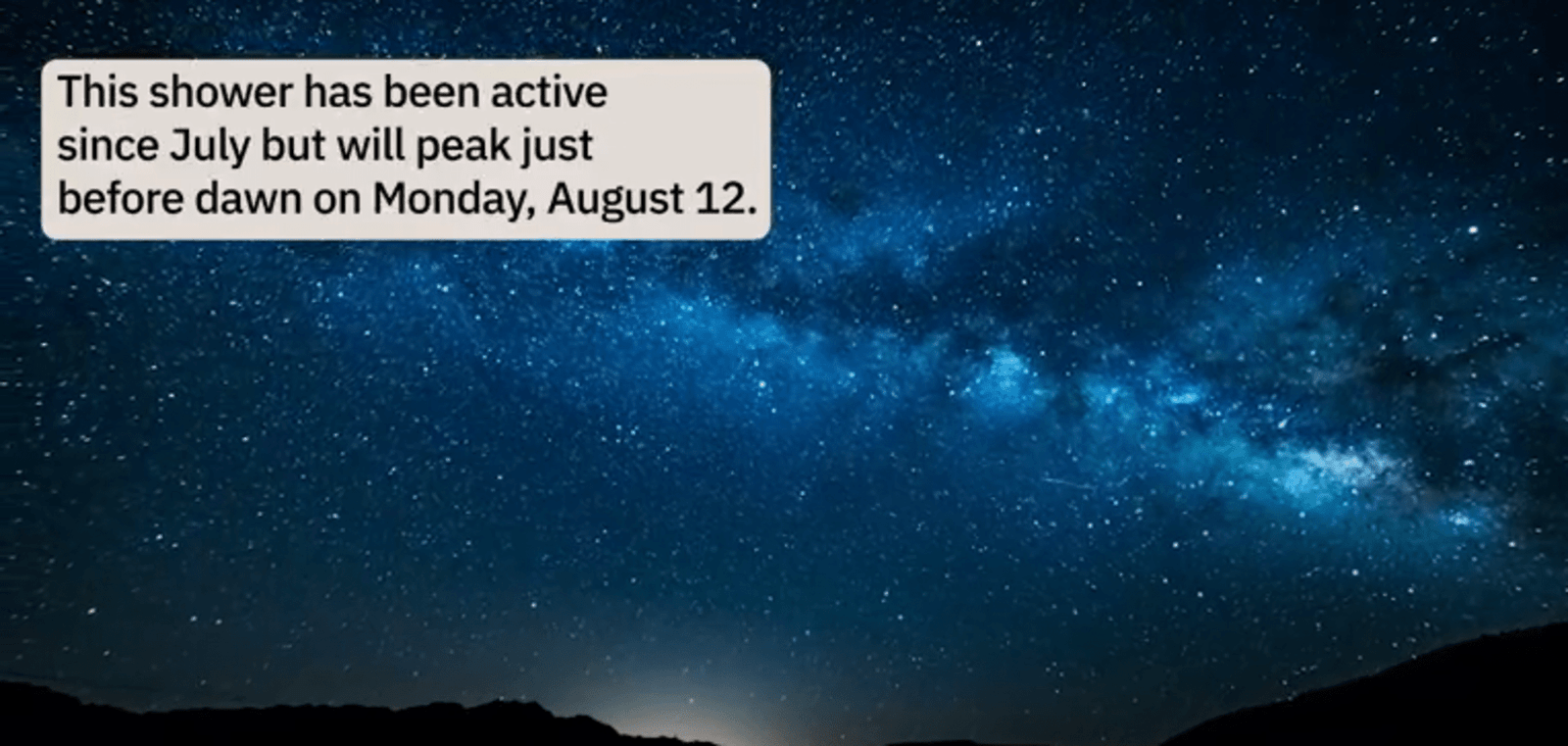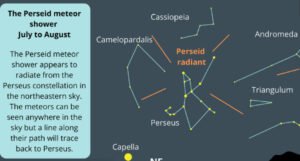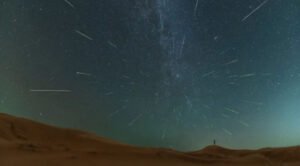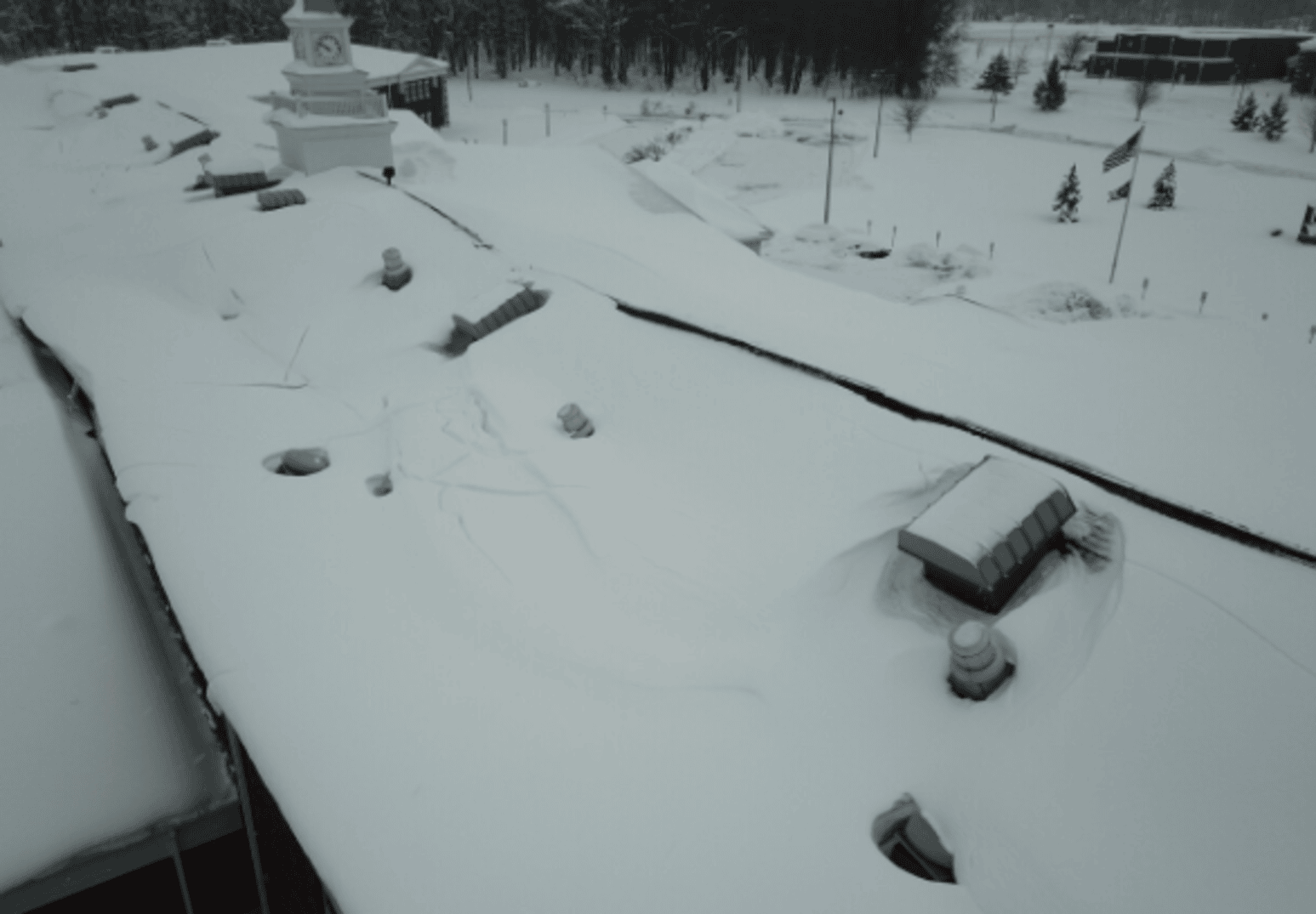
2024 Perseids: Best Viewing Tips. What Are the Perseids?
Each year, Earth passes through the debris left by this comet. The particles burn up upon entering Earth’s atmosphere, creating bright streaks in the sky. This shower is known for its high activity and bright meteors.
Origin and Discovery
It was first documented in the 19th century. However, its origins were known long before that. The connection to Comet Swift-Tuttle was made in the 19th century. This link helped explain the periodic nature of the shower.

Peak Viewing Time
The Perseids usually peak in early August. This year, the peak will be around 12 August. During this time, you can expect the most intense meteor activity. The best viewing happens late at night or before dawn.

Clear Skies
Cloud cover can obstruct your view. Ideally, you should find a location with minimal atmospheric interference.
Minimal Light Pollution
Light pollution can diminish the visibility of meteors. Rural areas or dark parks are ideal. The less artificial light, the better your viewing experience will be.
Viewing Location
The best locations for viewing are high and open areas. Mountains or elevated fields offer a broad view of the sky. Avoid areas with obstructions like tall buildings or trees. The more unobstructed your view, the more meteors you’ll see.
How to Watch the Perseids
Watching the Perseids is straightforward. No special equipment is necessary.
No Special Equipment Needed
Lie on a blanket or reclining chair for comfort. This allows you to gaze up at the sky without straining your neck.
Comfort and Preparation
Dress appropriately for the weather. Nights can be chilly, even in summer. Also, consider bringing snacks and drinks for a more enjoyable experience.
Best Time to Watch
During these hours, the meteor activity is highest. Early in the night, the sky may not be dark enough for optimal viewing. As the night progresses, the number of visible meteors increases.
What to Expect
During the Perseids, you can expect to see many meteors. Here’s what you might notice.
Meteor Frequency
The Perseids are known for their high frequency. On peak nights, you might see up to 60-100 meteors per hour. The rate can vary based on viewing conditions and time of night.
Brightness and Colors
Perseid meteors can be quite bright. Some may even leave trails that linger for a few seconds. They often have a white or yellowish color but can also display hues of green or red. The brightness and colors depend on the composition of the meteoroid.
Special Events
Occasionally, you might witness particularly bright meteors known as fireballs. These are larger than typical meteors and can be very spectacular. They can light up the sky and leave a lasting impression.
Additional Tips
To maximize your meteor-watching experience, keep these tips in mind.
Avoiding Distractions
Limit distractions while watching. This helps you focus on the sky and increases your chances of seeing meteors. Avoid looking at bright lights as they can affect your night vision.
Sharing the Experience
Watching with friends or family can make the experience more enjoyable. Share your observations and excitement. This can enhance the overall experience and create lasting memories.
Capturing the Moment
If you want to capture the meteor shower on camera, use a tripod for stability. A wide-angle lens will help you capture more of the sky. Set your camera to a long exposure to capture the meteors as they streak across the sky.
Safety Considerations
While watching the Perseids, keep a few safety tips in mind.
Outdoor Safety
If you’re watching outside, ensure your safety. Stay in well-lit areas if you’re in an unfamiliar location. Bring a flashlight for navigation but use it sparingly to preserve your night vision.
Weather Conditions
Check the weather before heading out. Avoid watching if there are severe weather warnings. High winds, storms, or heavy rain can make the experience unpleasant or unsafe.
Weather conditions play a critical role in the visibility of the Perseids meteor shower. For an optimal viewing experience, the weather must be clear and conducive to stargazing. Here’s why weather matters and how to ensure you have the best conditions for watching.
Clear Skies
Clear skies are essential for observing meteors. Clouds, fog, or haze can obscure your view and block the meteors from sight. Before heading out, check the local weather forecast to ensure that the sky will be mostly clear during the peak hours of the meteor shower. Websites and apps that provide real-time weather updates can help you plan effectively.
Temperature Considerations
While temperature does not directly affect meteor visibility, it impacts your comfort during the viewing. Nights can become chilly, even in summer. Dressing in layers and bringing blankets or warm clothing will help you stay comfortable and enjoy the experience without distraction.
Conclusion
By choosing the right time, location, and preparation, you can enjoy a memorable experience. Clear skies, minimal light pollution, and comfort are key to maximizing your viewing. Whether you’re a seasoned sky watcher or a casual observer, the Perseids offer a chance to marvel at the beauty of the night sky. Enjoy the show and the fleeting beauty of the meteors as they streak across the heavens.









